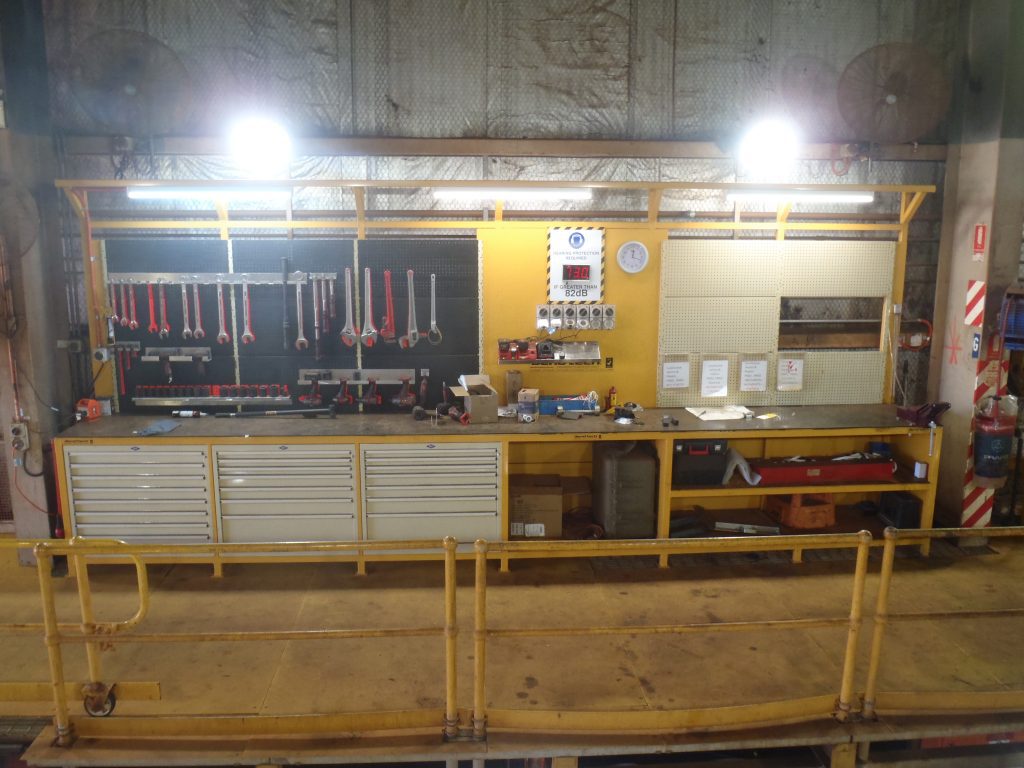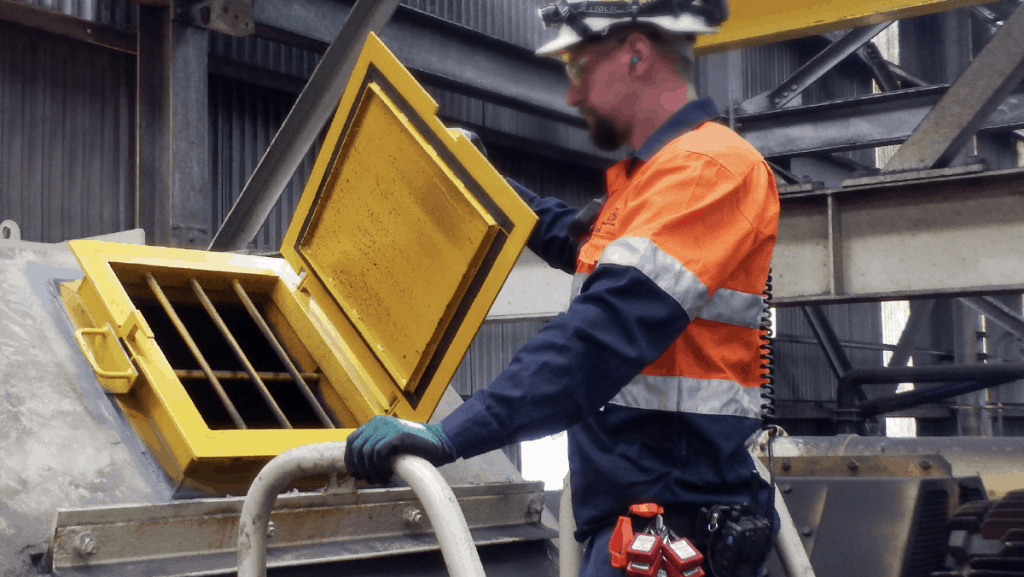Elevated platforms, whether fixed or mobile, are designed to enable people and equipment to access heights. They are commonly found on construction sites, in warehouses, factories, or anywhere where workers frequently perform tasks at elevation.
To guarantee these platforms can handle the loads placed upon them at any given time, it’s critical to understand the total load capacity of a particular type of platform. This article focuses on understanding load capacities, so you know your platform can safely handle the weight.
Understanding load capacity
The load capacity of a platform refers to the maximum weight limit that a safety platform or structure can handle. This weight limit prevents the platform from being overloaded to the point where its structural integrity is compromised.
When determining the total safe weight, several factors come into play, such as the weight of equipment, the total weight of all workers on the platform, and any materials being stored or used on the platform. If the recommended weight limit is exceeded, it can result in platform failure and collapse. Injuries and possible fatalities may be the outcome.
There are a number of variables that come into play when assessing the total load capacity of any platform, fixed or temporary. These include the strength of the materials the platform is made of, its design, the distribution of weight upon the platform, and also environmental factors. The key to ensuring platforms are safely within the weight limitations hinges on fully comprehending these variables.
Understanding load types
We’ll soon get into the specifics of load capacity, but before we do, let’s first cover the different types of loads.
Live loads
Live loads are movable loads on the platform, and they include human traffic, materials, tools and other equipment. Because these loads are dynamic, they can shift and move depending on what is taking place on the platform at the time.
Dead loads
The weight of the platform itself has to be considered, and that’s what dead loads refer to. Along with the structure itself, any fixtures or permanent features are also included in the total dead load weight.
Environmental loads
The environment needs to be factored in, as wind, rain, snow and seismic activity all affect the structural integrity of the platform and its stability in outdoor locations. Environmental loads should never be overlooked.
How to determine platform load capacity
We’ll now delve into the factors that determine the load capacity of a safety platform.
Platform construction and design
Platform construction and design play a pivotal role in determining its load capacity. As an example, platforms with cross-bracing and reinforced beams can bear greater weights, due to the way they distribute loads more efficiently. The platform’s dimensions also come into play, including the spacing of support beams.
Platform material strength
Platforms are made from various materials, and some are a combination of two or more materials. Common materials include aluminium, steel and wood. Each material has its own load-bearing capacity and specific properties, such as yield strength, tensile strength, and compressive strength. These all determine how much weight the platform can hold before it’s compromised.
Distribution of weight
It’s important to distribute the weight as evenly as possible on the platform, rather than concentrating all of the weight in one area. Weight concentration leads to localised stress and possible platform failure. When weight is distributed evenly, the platform’s structural integrity remains intact.
Platform safety factors
Manufacturers and engineers will often include a safety factor when calculating the maximum load capacity of a particular platform. The reason for this is to add a buffer to accommodate unforeseen variables like human error or faults in the platform’s materials. An example of a safety factor is this: If the platform is rated to be able to hold 1000kg, a safety factor of 1.5 might be applied. This means the platform should conceivably be able to withstand 1500kg of total weight.
Platform testing and certification
To ensure a platform meets the required safety standards, it will undergo rigorous testing. These tests emulate a variety of real-world conditions, which include both dynamic and static loads, and environmental factors. Testing plays a role in determining the maximum load a platform can bear.
How to calculate the load capacity of a platform
It’s imperative to understand how to assess and calculate the load capacity of a safety platform. This ensures its safe use. Following is a guide on how this is achieved.
Start by identifying the platform material
Before any other factors can be considered, the first step is to identify the material the platform is made of. This has a huge bearing on how much weight the platform can safely handle. Both the tensile and compressive strengths of the material need to be factored into the equation. These need to be researched. To guarantee you have access to accurate data, get material specification sheets from the manufacturer.
Measure the platform’s dimensions
The dimensions of a platform also play a key role in determining its safe load capacity. Measure the length, width, depth, and spacing of any support beams.
Take into account live and dead loads
Step one is to calculate the dead weight, which is the weight of the platform itself. Now estimate the maximum weight of people, materials, tools and equipment that will be on the platform at any given point. This is the live load. The combined total needs to remain within the specified load capacity.
Factor in the environment
This applies when platforms are used outdoors. You need to consider the elements, such as storms, wind, rain and snow. These forces must be factored into load calculations as they add to the overall weight, and can also create stress points on the platform.
Include weight distribution
You’ll want to ensure the weight on the platform is distributed uniformly. Keep in mind that if certain areas are overloaded, structural failure could be the result. To avoid areas of concentrated weight stress, plan the placement of people, materials and equipment prior to using the platform.
Add in a safety factor
The last step is to add a safety factor, to create that important buffer and also to allow for any unexpected conditions. As mentioned earlier, a safety factor is usually 1.5 or greater. However, this varies depending on how the platform is used and the standards followed.
Is your platform overloaded?
An understanding of load capacity is a major plus, but sometimes real-world conditions can push a platform to its limits and beyond. That’s why it’s vital to know what signs to look for when it comes to an overloaded platform. Recognising these signs will prevent accidents, so keep the following indicators in mind:
- Creaking or odd sounds
- Visible bending or sagging of the platform
- Loose connections or bolts
- A shifting or unstable base
Wrapping up
To maintain a safe work environment at all times, it’s important to have a full understanding of platform load capacities and how to calculate them. Regular inspections of platforms are also highly advisable.
For all your safety platform requirements, contact the team at Bend Tech Group. We supply platforms for all projects and situations, and we guarantee quality and consistency for your complete safety.








About The Author: Highjumpdev
More posts by Highjumpdev